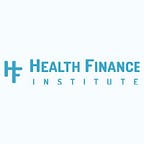Blended Finance in the Age of COVID-19
Introduction
Among the stark realities that have emerged from the COVID-19 pandemic is the negative impact on the underprivileged communities in low and middle-income countries (LMICs). In these areas, social distancing is simply not possible, and loss of work means being pushed further below the poverty line[1].
International aid must reflect the undeniable reality that this pandemic will change the constructs of our present global economy and global health system. The most vulnerable have lost their incomes if they have not already lost their health or their lives.
In this time, is international aid delivering to its full potential? Arguably NO, according to a recent report from OXFAM[2], the body that deemed international aid ‘woefully inadequate’ in the fight against the virus. Citing data from the Organization for Economic Co-operation and Development (OECD), the report reveals that “rich countries barely increased international aid by 1.4 percent overall in 2019, while they cut humanitarian assistance by 2.9 percent.”
In this article, we dive deep into the need for more international aid and the need for an even stronger WHO, one that has the resources to carry out its mission of healthier lives for all. We also look at how the novel notion of blended finance is a well-suited solution to deliver the much-needed relief to global communities.
The need of the hour
In the US, Health Finance Institute’s recent analysis of CDC data shows that COVID-19 patients with chronic conditions are up to 11 times as likely to be hospitalized and up to 14 times as likely to be admitted to the ICU as compared to COVID-19 patients without chronic conditions.
The risk is even more substantial in LMICs, many of which have weak public health systems. In Sub-Saharan Africa (SSA), for example, states face the double burden of disease[3]- meaning that their populations live with high prevalence of infectious diseases such as HIV and TB while also carrying a heavy burden of noncommunicable diseases (NCDs) like cancer, heart disease and diabetes. WHO estimates that NCD related deaths are projected to exceed deaths due to infectious, maternal, perinatal and nutritional diseases combined by 2030[4].
Further, health systems in LMICs are fraught with infrastructural weakness as well as limited supplies and human resources. These countries have to choose between continuing to provide life-saving screening and medications to those with NCDs and managing a global pandemic. This choice is simply not one that policymakers should have to make. The UN estimates that developing countries need a USD 500 billion in increased life-saving aid now to have hope of tackling the COVID-19 crisis. The only viable source of these funds are the high-income countries. Recognizing the fact that high-income countries are facing tough times too, all that is needed is only a fraction of their trillion-dollar rescue programs to prevent millions dying and hundreds of millions falling into poverty.
The solution
HFI believes blended finance is a feasible approach to leverage foreign aid and attract additional private investment to bolster LMIC’s COVID-19 responses. The OECD has highlighted blended finance as the most promising solution to end extreme poverty and even alleviate the effects of climate change, thereby closing the trillion-dollar investment gap in the Sustainable Development Goals (SDGs). Blended finance has the capacity to simultaneously de-risk private investments and enable health initiatives to continue to scale and replicate after the exit of donor capital.
Now is the time for all to come together, cooperate and weigh-in, and share in the investment and implementation. In doing so, all countries — not just LMICs — will have much to gain. Innovations like blended financing will allow states to continue investing in other essential health interventions to meet the needs of this pandemic and enable management of COVID-19 infectons without sacrificing the needs of chronic disease patients.
Why should a private sector and institutional investors choose blended finance instead of the countless other investment opportunities available? The answer is threefold:
· Blended finance goes hand-in-hand with the Sustainable Development Goals (SDGs) and a recent study[5]estimated a $12 trillion economic opportunity in SGDs for the private sector in the next 10–15 years;
· Blended finance projects today are majorly targeted to solve emerging market challenges. These regions have been outperforming developed markets in last 10 years[6];
· Lastly, investing towards achieving SDGs also provide investors with tax-saving benefits and the ability to engage at earlier stages of the investment life cycle, when the potential upside is much greater[7].
Conclusion
Despite the necessity of the present efforts to flatten the curve of this pandemic, we must keep an eye to the future — especially through the lens of the SDGs. Blended finance is often marred by the criticism[8] that there is not sufficient data and transparency to deem it effective. The best way to overcome this challenge is to implement blended finance measures worldwide and gather data from these experiments to further perfect and streamline future solutions. The more we try it, the more robust blended finance will become as a viable investment mechanism.
Amid a global economic recession, it can be difficult to justify increased expenditure on foreign aid. And yet, if this were ever a learning moment in history, our investments now abroad will provide a return at home in the future. We need not choose between saving economies and saving lives. Both the global economy and countless lives can be spared. Let’s get started!
[3]https://www.weforum.org/agenda/2020/03/why-sub-saharan-africa-needs-a-unique-response-to-covid-19/
[4]https://www.afro.who.int/health-topics/noncommunicable-diseases
[5]https://www.blendedfinance.earth/why-blended-finance
[6]http://www3.weforum.org/docs/WEF_Blended_Finance_Private_Sector_Context_pager.pdf
[7]http://www3.weforum.org/docs/WEF_Blended_Finance_Private_Sector_Context_pager.pdf
[8]https://www.devex.com/news/why-blended-finance-hasn-t-taken-off-96612
